Apostasy is the formal disaffiliation from, abandonment of, or renunciation of a religion by a person. It can also be defined within the broader context of embracing an opinion that is contrary to one's previous religious beliefs. One who undertakes apostasy is known as an apostate. Undertaking apostasy is called apostatizing. The term apostasy is used by sociologists to mean the renunciation and criticism of, or opposition to, a person's former religion, in a technical sense, with no pejorative connotation.
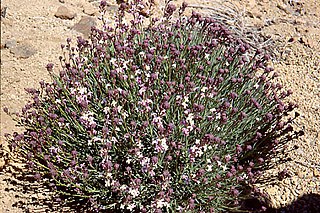
Erysimum, or wallflower, is a genus of flowering plants in the cabbage family, Brassicaceae. It includes more than 150 species, both popular garden plants and many wild forms. Erysimum is characterised by star-shaped and/or two-sided) trichomes growing from the stem, with yellow, red, pink or orange flowers and multiseeded seed pods.

The Pieridae are a large family of butterflies with about 76 genera containing about 1,100 species, mostly from tropical Africa and tropical Asia with some varieties in the more northern regions of North America and Eurasia. Most pierid butterflies are white, yellow, or orange in coloration, often with black spots. The pigments that give the distinct coloring to these butterflies are derived from waste products in the body and are a characteristic of this family. The family was created by William John Swainson in 1820.

Pieris rapae is a small- to medium-sized butterfly species of the whites-and-yellows family Pieridae. It is known in Europe as the small white, in North America as the cabbage white or cabbage butterfly, on several continents as the small cabbage white, and in New Zealand as the white butterfly. The butterfly is recognizable by its white color with small black dots on its wings, and it can be distinguished from P. brassicae by its larger size and the black band at the tip of its forewings.
Apostasy in Judaism is the rejection of Judaism and possible conversion to another religion by a Jew. The term apostasy is derived from Ancient Greek: ἀποστάτης, meaning "rebellious" Equivalent expressions for apostate in Hebrew that are used by rabbinical scholars include mumar, poshea Yisrael, and kofer. Similar terms are meshumad, and min or Epikoros, which denote heresy and the negation of God and Judaism, implying atheism.

Pieris oleracea, or more commonly known as the mustard white, is a butterfly in the family Pieridae native to a large part of Canada and the northeastern United States. The nearly all-white butterfly is often found in wooded areas or open plains. There are two seasonal forms, which make it distinct from other similar species. Because of climate change, populations are moving further north.

Grevillea, commonly known as spider flowers, is a genus of about 360 species of evergreen flowering plants in the family Proteaceae. Plants in the genus Grevillea are shrubs, rarely trees, with the leaves arranged alternately along the branches, the flowers zygomorphic, arranged in racemes at the ends of branchlets, and the fruit a follicle that splits down one side only, releasing one or two seeds.
Apostasy in Islam is commonly defined as the abandonment of Islam by a Muslim, in thought, word, or through deed. It includes not only explicit renunciations of the Islamic faith by converting to another religion or abandoning religion, but also blasphemy or heresy by those who consider themselves Muslims, through any action or utterance which implies unbelief, including those who deny a "fundamental tenet or creed" of Islam, An apostate from Islam is known as a murtadd (مرتدّ).

Iberis, commonly called candytuft, is a genus of flowering plants belonging to the family Brassicaceae. It comprises annuals, evergreen perennials and subshrubs native to the Old World. The name "candytuft" is not related to candy, but derives from Candia, the former name of Iraklion on the Island of Crete.
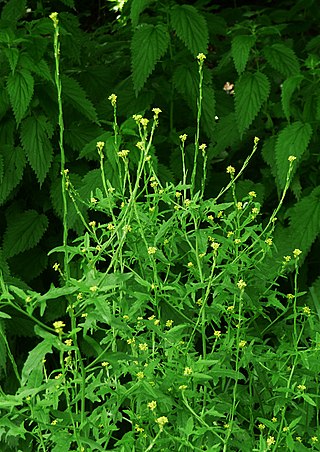
Sisymbrium officinale, the hedge mustard, is a plant in the family Brassicaceae.

Rhamphospermum arvense, the charlock mustard, field mustard, wild mustard, or just charlock, is an annual or winter annual plant in the family Brassicaceae. It is found in the fields of North Africa, Asia, Europe, and some other areas where it has been transported and naturalized. Pieris rapae, the small white butterfly, and Pieris napi, the green veined white butterfly, are significant consumers of charlock during their larval stages.

Bilins, bilanes or bile pigments are biological pigments formed in many organisms as a metabolic product of certain porphyrins. Bilin was named as a bile pigment of mammals, but can also be found in lower vertebrates, invertebrates, as well as red algae, green plants and cyanobacteria. Bilins can range in color from red, orange, yellow or brown to blue or green.
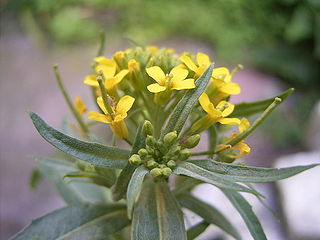
Erysimum cheiranthoides, the treacle-mustard,wormseed wallflower, or wormseed mustard is a species of Erysimum native to most of central and northern Europe and northern and central Asia. Like other Erysimum species, E. cheiranthoides accumulates two major classes of defensive chemicals: glucosinolates and cardiac glycosides.

Lepidium oleraceum is a herb in the family Brassicaceae, endemic to New Zealand. Its English common name is Cook's scurvy grass; Māori names include nau, ngau, naunau and heketara.
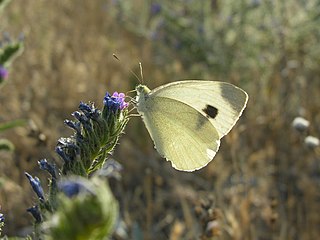
Pieris mannii is a butterfly in the family Pieridae.
This is a list of the flora of the Tubuai, an island in French Polynesia.
An apostate is one who renounces their religion.
Stangeia rapae is a moth of the family Pterophoridae that is found in French Polynesia.

The Tubuai tropical moist forests is a tropical and subtropical moist broadleaf forests ecoregion in French Polynesia. It covers the Austral Islands.
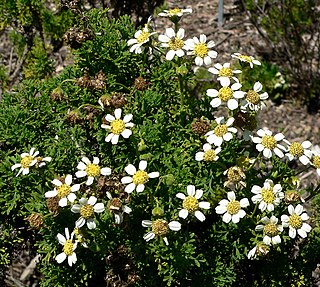
Bahieae is a tribe of plants in the family Asteraceae, mostly native to North America and Mexico. It was described by Baldwin et al. in 2002.













